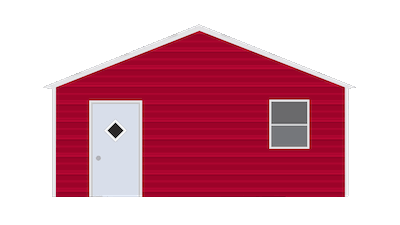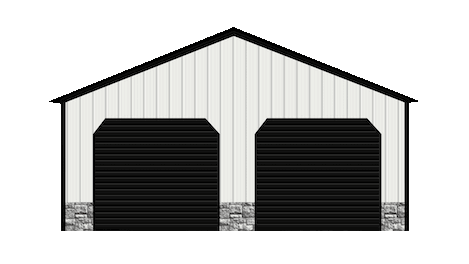Metal Building vs. Traditional Construction: Which is Right for You?
In the realm of construction, the debate between metal buildings and traditional construction methods has been ongoing for years. Each approach offers its own set of advantages and considerations, making the decision a pivotal one for anyone embarking on a construction project. In this comprehensive guide, we’ll delve into the key differences between metal buildings and traditional construction, helping you determine which option is best suited to your needs.
Understanding Metal Buildings
Metal buildings, often referred to as steel buildings, are structures primarily constructed using steel framing and metal panels. These buildings are known for their durability, affordability, and versatility. Metal buildings are typically pre-engineered and prefabricated off-site before being assembled on the construction site, offering a streamlined and efficient building process.
Advantages of Metal Buildings:
- Durability: Steel is renowned for its strength and resilience, making metal buildings highly durable and capable of withstanding harsh weather conditions, seismic activity, and other environmental challenges. The inherent strength of steel also provides excellent protection against fire, pests, and corrosion, ensuring long-term structural integrity.
- Cost-Effectiveness: Metal buildings are often more cost-effective than traditional construction methods due to reduced material costs, faster construction times, and lower maintenance requirements. Prefabricated metal building components can be mass-produced in a factory setting, minimizing waste and labor costs associated with on-site construction.
- Versatility: Metal buildings can be customized to suit a wide range of applications, including warehouses, industrial facilities, agricultural buildings, commercial structures, and residential homes. With advances in design technology and manufacturing processes, metal buildings offer endless possibilities in terms of size, shape, and layout.
- Energy Efficiency: With advancements in insulation technology, metal buildings can be designed to optimize energy efficiency, reducing heating and cooling costs and promoting sustainability. High-performance insulation materials such as spray foam or rigid foam panels can be integrated into the building envelope to minimize thermal bridging and enhance indoor comfort.
- Speed of Construction: Prefabricated metal building components can be manufactured and assembled quickly, resulting in shorter construction timelines and faster occupancy. The modular nature of metal buildings allows for efficient assembly on-site, minimizing disruption to surrounding areas and accelerating the completion of the project.
Exploring Traditional Construction
Traditional construction methods involve the use of materials such as wood, concrete, and brick to create structures. This approach often entails on-site construction, with skilled laborers assembling the building components according to architectural drawings and specifications.
Considerations for Traditional Construction
- Cost and Time: Traditional construction methods may be more time-consuming and labor-intensive than metal building construction, resulting in longer project timelines and potentially higher costs. The reliance on skilled labor and manual construction techniques can contribute to increased labor costs and construction delays, particularly in regions with labor shortages or high demand for construction services.
- Material Limitations: Traditional construction materials such as wood and masonry may have limitations in terms of durability, fire resistance, and environmental sustainability compared to steel. Wood is susceptible to rot, pests, and fire, while masonry materials require skilled craftsmanship and specialized construction techniques to achieve structural integrity and weather resistance.
- Maintenance and Upkeep: Traditional buildings may require more frequent maintenance and upkeep to address issues such as rot, mold, and deterioration of materials over time. Exposure to moisture, UV radiation, and temperature fluctuations can accelerate the degradation of traditional building materials, necessitating regular inspections, repairs, and protective treatments to preserve the structural integrity and appearance of the building.
- Environmental Impact: Traditional construction methods may have a higher environmental impact due to the extraction, processing, and transportation of natural materials such as wood and stone. Deforestation, quarrying, and mining activities associated with traditional building materials can contribute to habitat destruction, soil erosion, and air and water pollution, exacerbating environmental degradation and climate change.
Choosing the Right Option for You
When deciding between metal buildings and traditional construction methods, it’s essential to consider your specific needs, budget, timeline, and aesthetic preferences. For projects requiring durability, cost-effectiveness, and rapid construction, metal buildings offer a compelling solution. However, if architectural flexibility, customization, and artisanal craftsmanship are paramount, traditional construction methods may be the preferred choice.
Ultimately, the decision comes down to weighing the advantages and considerations of each approach against your project requirements and objectives. By carefully evaluating your options and consulting with experienced professionals, you can make an informed decision that ensures the success and satisfaction of your construction project, whether it be a sleek steel building or a timeless traditional structure.





 Home
Home Products
Products Styles
Styles Resources
Resources Service Area
Service Area About Us
About Us Contact Us
Contact Us Extras
Extras Search
Search Wishlist
Wishlist











